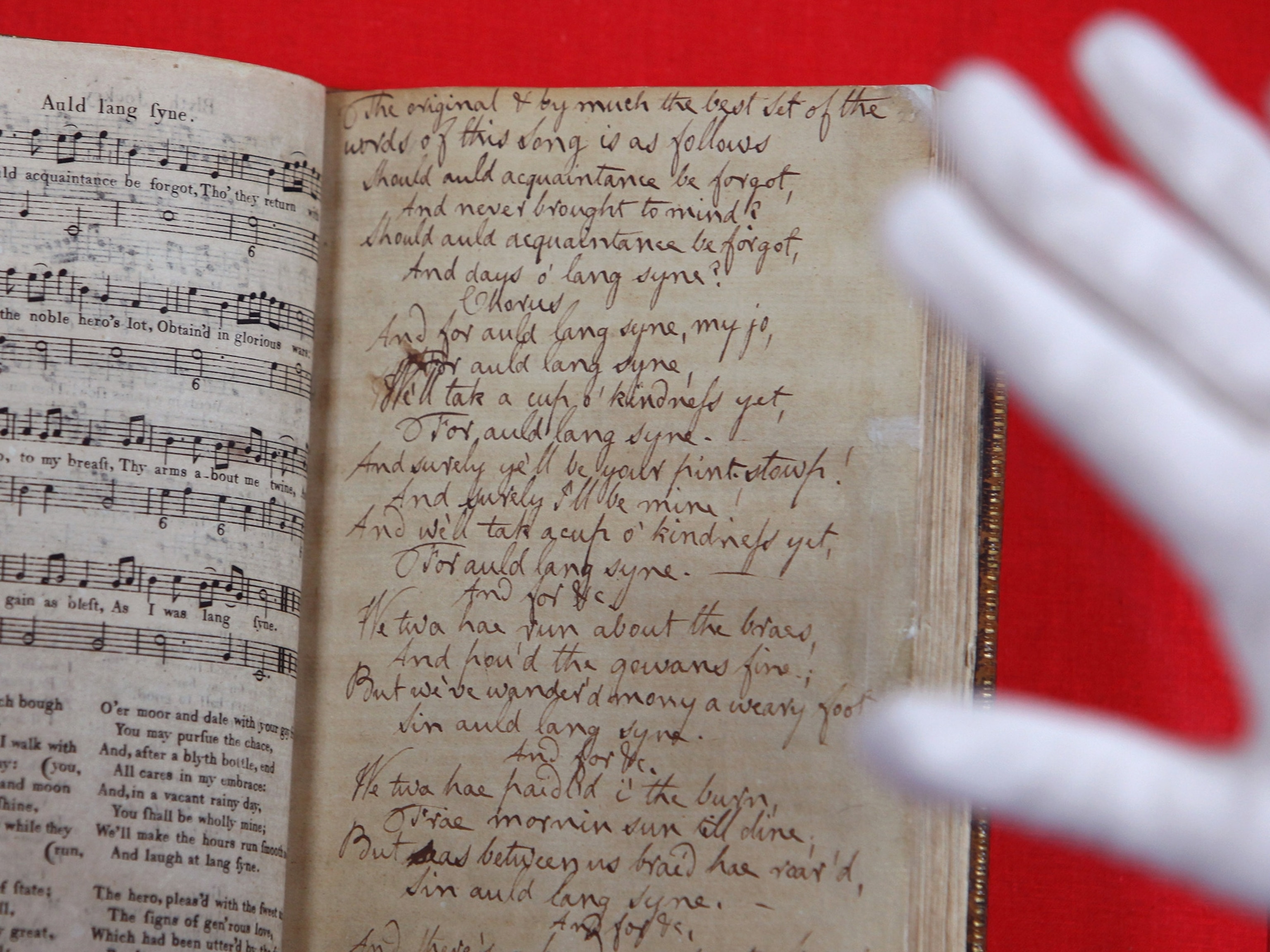
A brief history of Rosh Hashanah, the kickoff to the Jewish New Year
Celebrated with trumpet blasts, prayers, and symbolic foods, this holiday marks the start of the Jewish high holy days.
Food, sound, prayer, reflection, celebration. Jewish people around the world will soon wish one another “Shanah tovah” (Hebrew for “good year”) during Rosh Hashanah, the observance of the Jewish New Year.
The holiday, which takes place this year between sundown on September 25 and sundown on September 27, kicks off the Jewish high holy days. Here's what you need to know about how the holiday is celebrated—and the history of the traditional blowing of the shofar horn.
Origins and meaning of Rosh Hashanah
Jewish people welcome the new year in September or October, not January, in observance of the lunisolar Hebrew calendar. Rosh Hashanah begins on the first day of Tishri, the first month of the calendar’s civil year and seventh month of its religious year. Given that the Hebrew calendar is more than a week shorter than the Gregorian calendar and, according to tradition, originated with the biblical creation of the universe, this holiday will mark the beginning of the year 5783 for Jews worldwide.
Hebrew for “head of the year,” Rosh Hashanah is a chance not just to celebrate and look ahead, but to consider the past and review one’s relationship with God. It also marks the first day of a period known as the Ten Days of Awe, or Days of Repentance, during which a person’s actions are thought to be able to influence both God’s judgment and God’s plan for that person. These high holy days culminate in Yom Kippur, a time of atonement that is considered the holiest day of the year.
Though the holiday has been celebrated for thousands of years, its origins are murky. Jewish scripture lays out the month and days of a similar festival but does not call it Rosh Hashanah. In the biblical passage Leviticus 23:24-25, God tells Moses that the people of Israel should observe the first day of the seventh month as a day of rest and mark it with the blast of horns.
At some point, the horn-blowing holiday became associated with the new year. The earliest reference to Rosh Hashanah in a rabbinic text comes from the Mishnah, a Jewish legal text that dates from A.D. 200.
How Rosh Hashanah is celebrated
In the leadup to Rosh Hashanah, the shofar—a trumpet made from a ram or kosher animal’s horn—is regularly sounded in synagogues. The holiday itself is celebrated with even more shofar blasts, usually a hundred during the services on both days. Many Jews interpret the sound as a call to repent of sins and seek forgiveness from God.
Work is prohibited on Rosh Hashanah, and many Jewish people spend the holiday attending special services at their synagogues and then celebrating with festive meals.
Rosh Hashanah has its own symbolic foods: round challah, apples, and honey. Symbolizing God, the cycles of the year, and the sustenance that lies ahead, a rounded challah loaf, often studded with raisins, is usually dipped in honey and eaten in a celebratory meal. So are apples, which represent hope for a sweet year ahead. The tradition of eating apples for Rosh Hashanah is thought to have originated with Ashkenazi Jews in Europe who used the fall fruit in their new year’s meals. (See nine breads from around the world.)
So how will the beginning of the year 5783 be celebrated? In many places worldwide, synagogue attendance is still impossible due to the pandemic—or will require masking or proof of vaccination. But whether they’re on Zoom or gathered in person with family and friends, Jewish people around the world will surely be eating well and blowing their shofars in a show of new year’s devotion.
Editor's note: This story was originally published on September 18, 2020. It has been updated.
Related Topics
You May Also Like
Go Further
Animals
- This ‘saber-toothed’ salmon wasn’t quite what we thoughtThis ‘saber-toothed’ salmon wasn’t quite what we thought
- Why this rhino-zebra friendship makes perfect senseWhy this rhino-zebra friendship makes perfect sense
- When did bioluminescence evolve? It’s older than we thought.When did bioluminescence evolve? It’s older than we thought.
- Soy, skim … spider. Are any of these technically milk?Soy, skim … spider. Are any of these technically milk?
- This pristine piece of the Amazon shows nature’s resilienceThis pristine piece of the Amazon shows nature’s resilience
Environment
- This pristine piece of the Amazon shows nature’s resilienceThis pristine piece of the Amazon shows nature’s resilience
- Listen to 30 years of climate change transformed into haunting musicListen to 30 years of climate change transformed into haunting music
- This ancient society tried to stop El Niño—with child sacrificeThis ancient society tried to stop El Niño—with child sacrifice
- U.S. plans to clean its drinking water. What does that mean?U.S. plans to clean its drinking water. What does that mean?
History & Culture
- Séances at the White House? Why these first ladies turned to the occultSéances at the White House? Why these first ladies turned to the occult
- Gambling is everywhere now. When is that a problem?Gambling is everywhere now. When is that a problem?
- Beauty is pain—at least it was in 17th-century SpainBeauty is pain—at least it was in 17th-century Spain
- The real spies who inspired ‘The Ministry of Ungentlemanly Warfare’The real spies who inspired ‘The Ministry of Ungentlemanly Warfare’
- Heard of Zoroastrianism? The religion still has fervent followersHeard of Zoroastrianism? The religion still has fervent followers
Science
- Here's how astronomers found one of the rarest phenomenons in spaceHere's how astronomers found one of the rarest phenomenons in space
- Not an extrovert or introvert? There’s a word for that.Not an extrovert or introvert? There’s a word for that.
- NASA has a plan to clean up space junk—but is going green enough?NASA has a plan to clean up space junk—but is going green enough?
- Soy, skim … spider. Are any of these technically milk?Soy, skim … spider. Are any of these technically milk?
- Can aspirin help protect against colorectal cancers?Can aspirin help protect against colorectal cancers?
Travel
- What it's like to hike the Camino del Mayab in MexicoWhat it's like to hike the Camino del Mayab in Mexico
- Follow in the footsteps of Robin Hood in Sherwood ForestFollow in the footsteps of Robin Hood in Sherwood Forest
- This chef is taking Indian cuisine in a bold new directionThis chef is taking Indian cuisine in a bold new direction
- On the path of Latin America's greatest wildlife migrationOn the path of Latin America's greatest wildlife migration
- Everything you need to know about Everglades National ParkEverything you need to know about Everglades National Park




